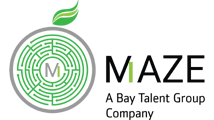HAVE YOU GOOGLED YOUR OWN PERSONAL BRAND? – PART 3 OF 3
5 steps to creating a compelling personal brand
Whether you’re embarking on a new job search, thinking about a career change or striving to achieve specific milestones in your current organization, establishing a personal brand is key for reaching your goals.
What is personal brand?
A personal brand identifies what makes you unique and valuable. For example, perhaps you’re an iOS development ninja who has a passion for mobile and a knack for creating profitable apps. Personal branding involves promoting these characteristics about yourself, so you become known for this expertise and can achieve desired success in your professional career.
Why is personal branding important?
The digital age makes it easy for anyone to “Google” you and find out all kinds of information. Prospective, as well as current employers, can gauge your skillset and reputation just by checking out the information they find on the Internet. In fact, 55% of executive recruiters say they have removed a viable candidate from consideration because of negative information found online [ 2013 Executive Job Market Intelligence Report].
For this reason, and the fact that 94% of recruiters use or plan to use social media in their recruitment efforts, it is essential that you establish a personal brand online to showcase your strengths and stand out from the crowd [2013 Social Recruiting Survey Results].
“Candidates who have a compelling personal brand have an advantage,” says Jay Nayaik, Managing Partner at Maze Technology Solution. “When you’re looking through a stack of resumes that all showcase top-notch credentials, it can be hard to distinguish one candidate from the next. A strong personal brand can be the deciding factor between choosing one candidate over another.”
How to create a compelling personal brand
Even if you haven’t set out to create your personal brand, you may be surprised to know that you still have one. Think about the information that appears when people Google your name, or the way others perceive you, or the image you convey. The key is to take control of your personal brand so that it represents who you are or what you want to be. This will allow you to drive your own professional success.
Here are 5 steps you need to follow:
1. Define
Figuring out who you are and what you want to be known for is the most important step in establishing your personal brand. It can also be the most difficult. Ask yourself questions like:
-
- Your values – What values do you deem most important as you live your life?
- Your interests – What activities interest you most? What are you passions?
- Your strengths/weaknesses – What do you do well and where do you lack skills?
- Your personality traits – How do you describe yourself? How would others describe you?
- Your education and experience – What education/training and skills do you bring to the table?
- Your inner happiness – What are your proudest accomplishments?
“We find that the most successful professionals are able to combine what they love to do with what they are good at,” says Nayaik. “Taking the time for this self-discovery allows you to create a clear path for attaining you goals.”
2. Plan
Now that you’ve figured out what you want, you need to create a plan for how to get it. The plan should include your short-term and long-term goals as well as specific tasks you need to accomplish by certain dates. “Written goals and to-dos make you more accountable,” says Nayaik. “Simply having a vague idea in your mind doesn’t provide you with clear enough direction.”
3. Create
With a clear path defined, the next step is to create the items you need to implement you plan. Begin by developing an online presence, such as a LinkedIn profile, Twitter account, and/or blog. This could also mean reinventing yourself. Perhaps you need to update your outward appearance to suit your new brand image.
4. Communicate
When you embody your brand image and have tools in place to promote your expertise, it’s time to start communicating your value. This may involve writing regular blog posts, commenting in industry-related groups on LinkedIn, or offering to participate in webinars or podcasts with people with whom you want to be associated. “Things like blog posts and videos increase your searchability online,” says Nayaik. “If you want to stand out, these are ways you can boost your professional visibility.”
5. Manage
The last part of establishing your personal brand involves ongoing management. Don’t make the mistake of neglecting your brand or leaving your professional reputation to chance. You must live and breathe your brand every day. This means keeping information current online, continuing to build a strong reputation, maintaining your outward appearance, and keeping up-to-date on information related to your area of expertise.
Building and managing your personal brand takes time. However, if done well, it can pay off tremendously in your professional success and personal happiness. “Don’t lose opportunities by not putting your best foot forward,” says Nayaik. “A proactive approach to your personal brand can mean the difference between landing your dream job or being overlooked by recruiters and other influencers in your network.”
